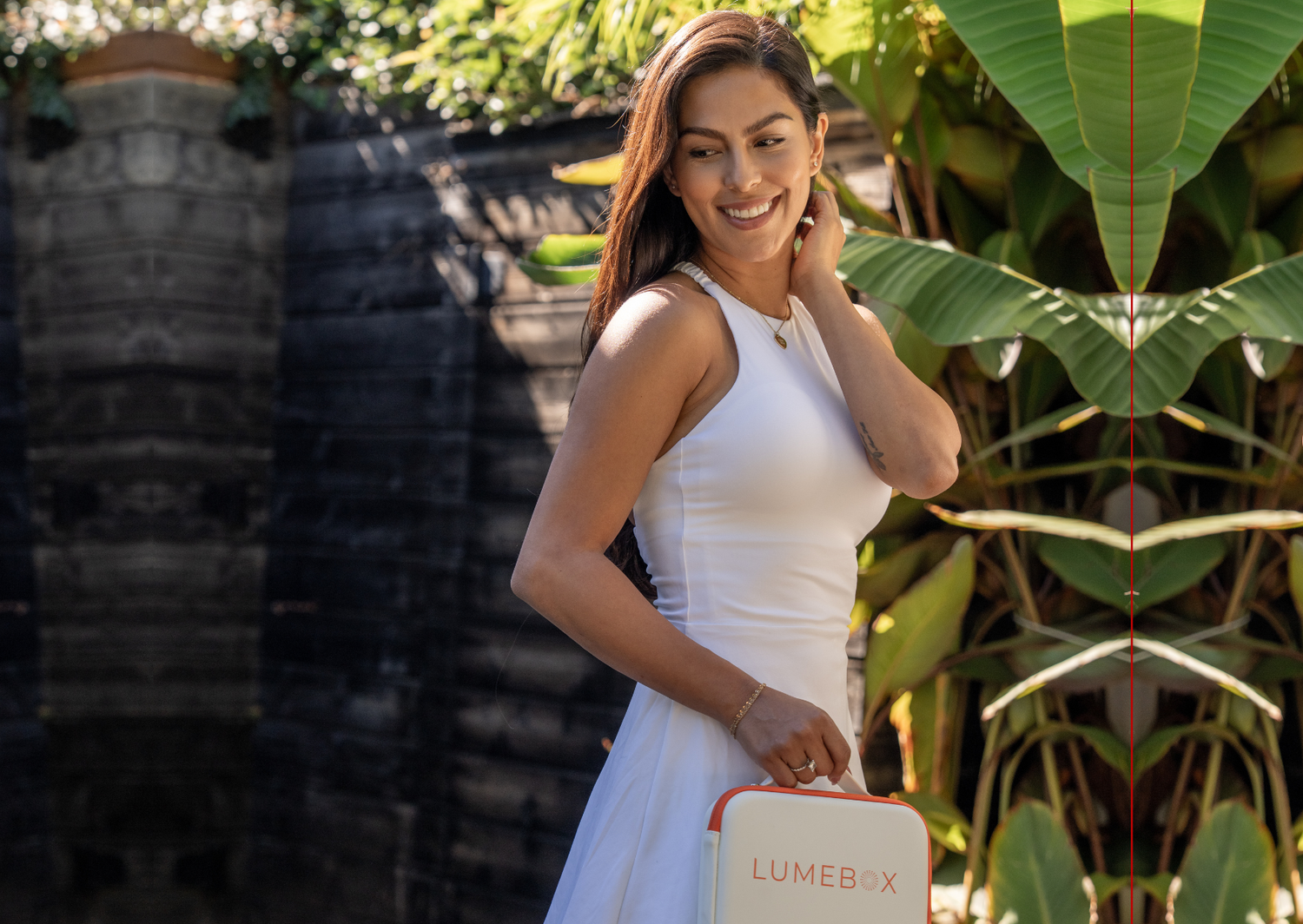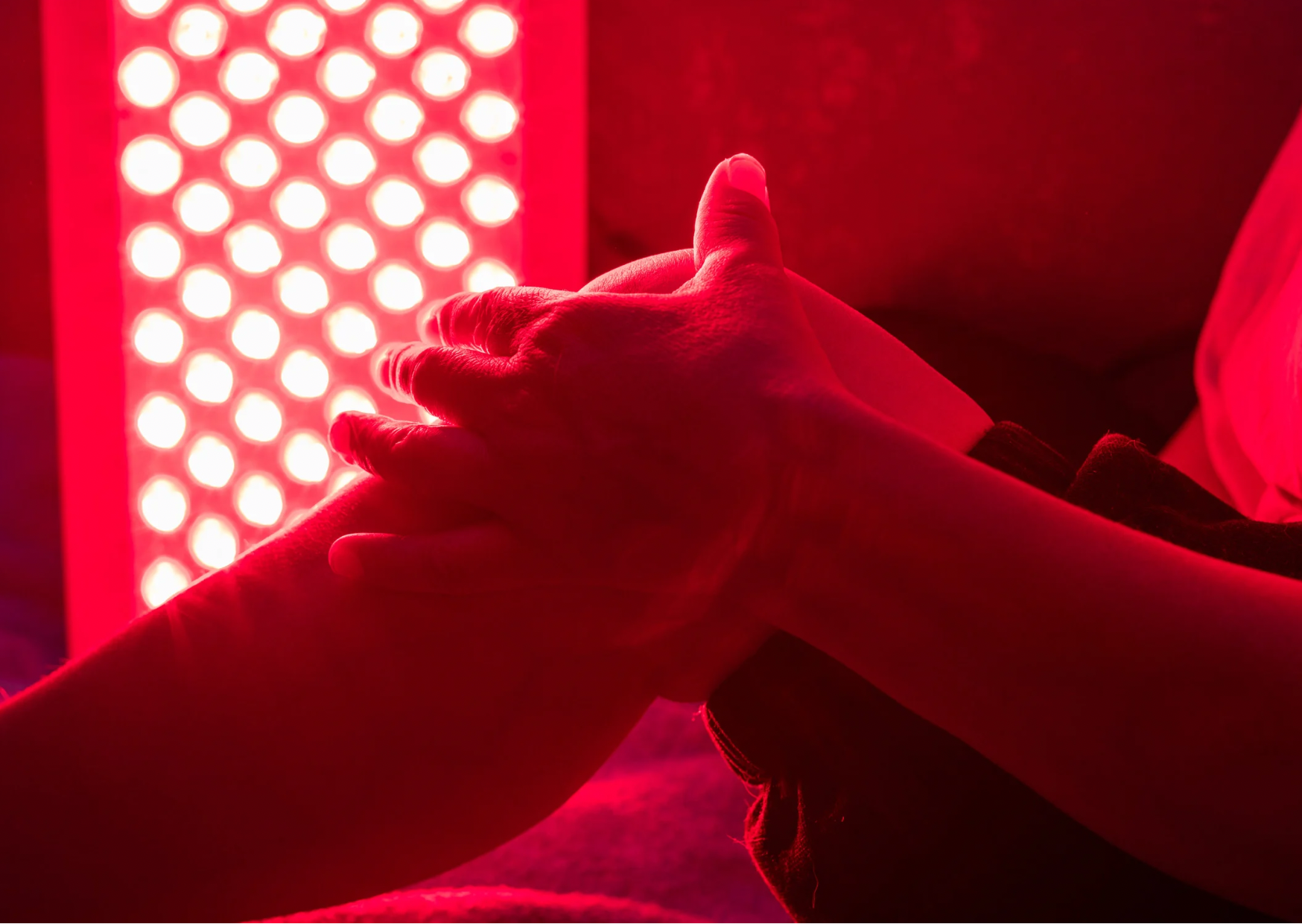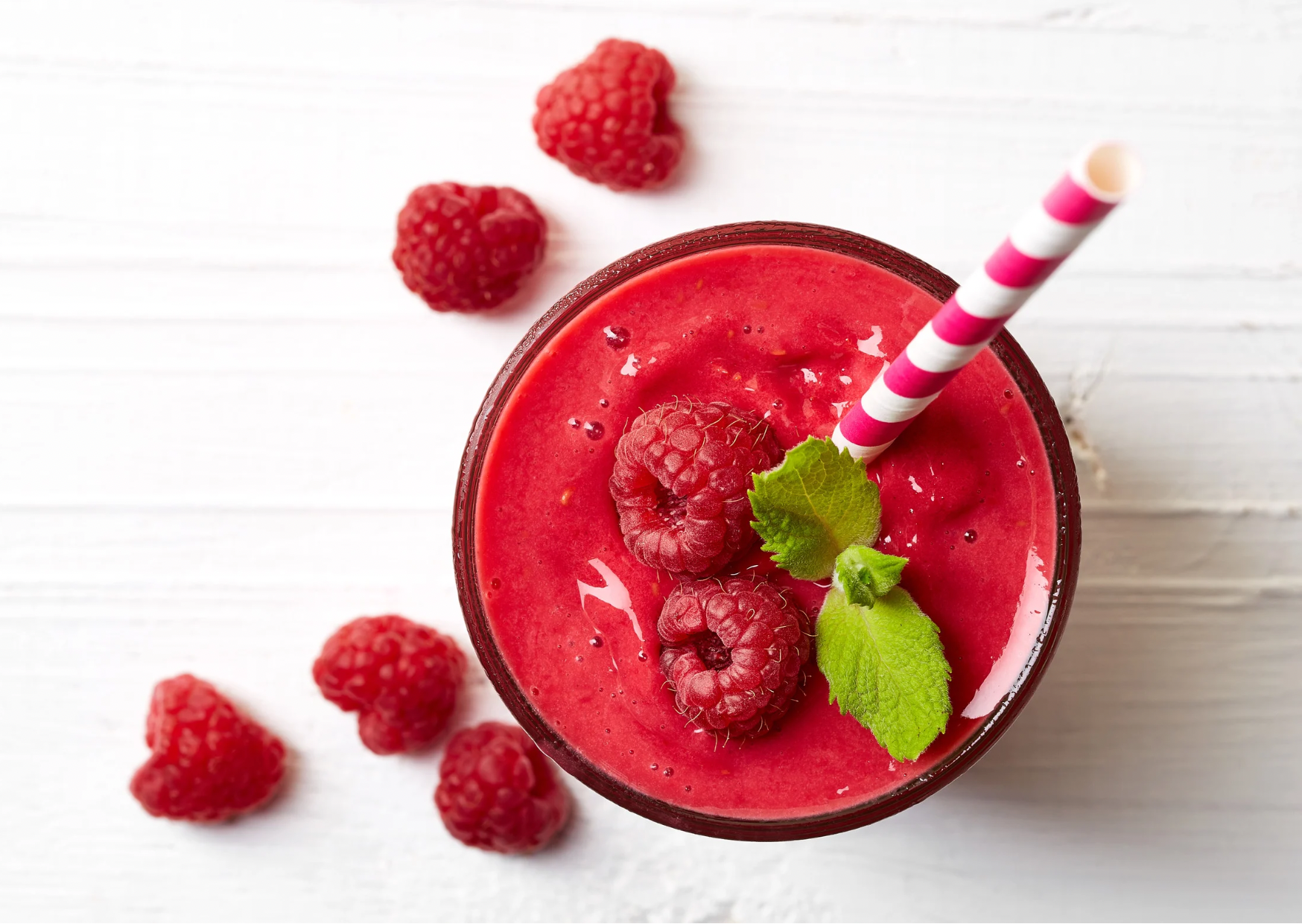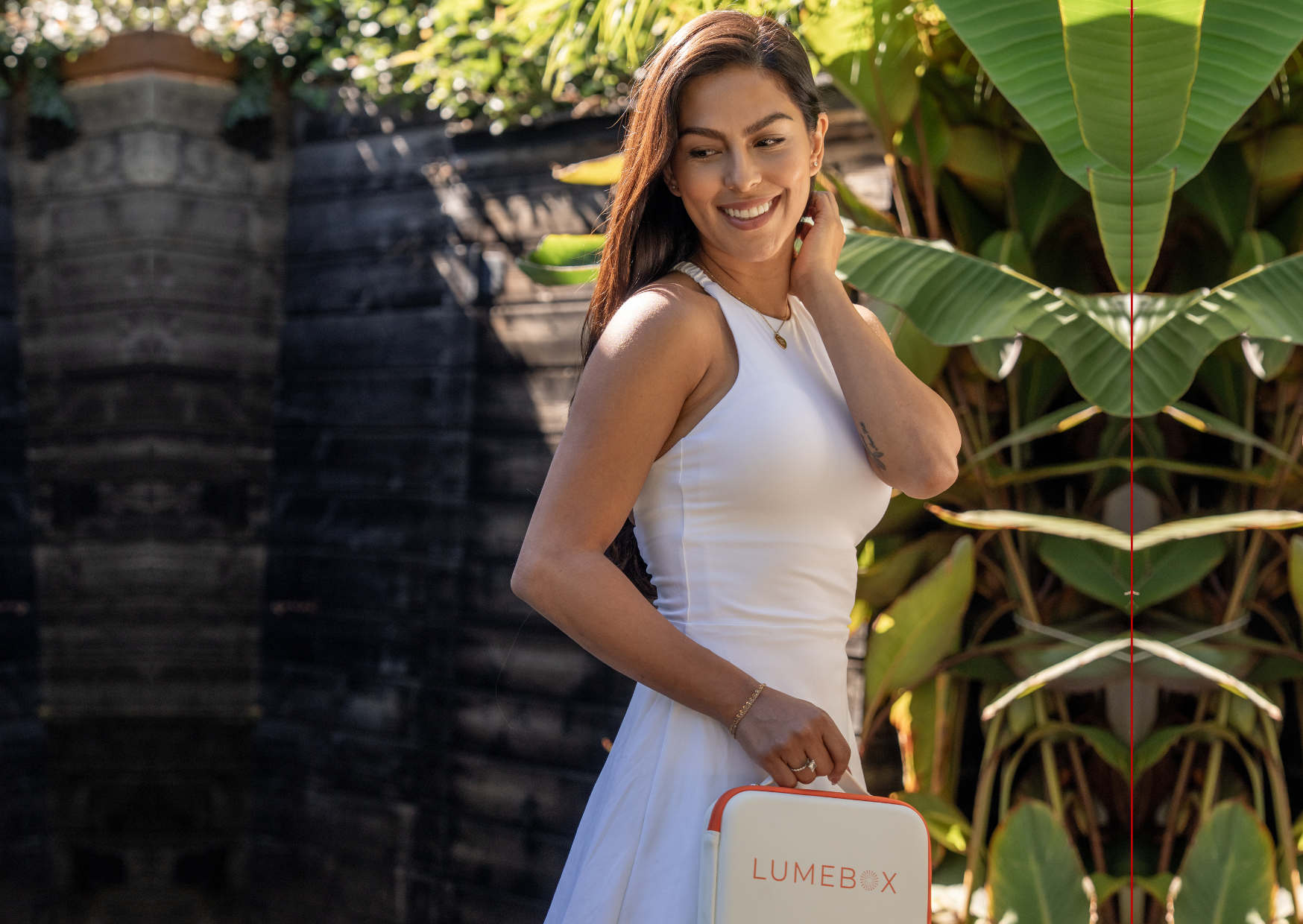Light Can Be Restorative
Humans are resourceful creatures, so it’s no surprise we’ve been harnessing the power of light for millennia. Sunlight was a powerful tool for ancient Egyptians alike [1], but why?
Light from the sun powers life on Earth. Plants need it to grow through photosynthesis, and in many ways, we’re not so different. While we don’t make energy from sunlight directly, our cells still depend on light to thrive.
Our trillions of cells need a constant supply of energy to power everything from thinking to moving to healing—energy we generate by converting food into fuel through cellular respiration.
And research suggests that specific wavelengths of light found in the sun, like red and near-infrared, can support that process by activating the mitochondria - the powerhouses in our cells where that energy production happens.
Benefits of Natural Sunlight
Sunlight helps your body synthesize vitamin D, an essential nutrient for:
- Bone health
- Immune function
It also supports:
- Hormone regulation
- Mood stability
- Setting your internal clock (keeping you alert during the day and sleepy at night)
Sunlight exposure has been associated with lower rates of chronic diseases, such as:
- Heart disease [2,3]
- Certain cancers [4,5]
- Asthma [6]
- May also support cognitive health - lower sunlight exposure has been linked to a higher risk of cognitive decline [7]
Similarly, conditions like Crohn’s disease [8], multiple sclerosis [9], Parkinson’s disease [10], and even type 2 diabetes [11] are more common in people with lower sun exposure or who live farther from the equator.
What Happens If We Don’t Get Enough Sunlight?
Beyond the well-known link to vitamin D deficiency, which can affect bone density, mood, and other aspects of health, some studies suggest that low sun exposure may be linked to shorter lifespans.
For example, this Swedish cohort study examined the relationship between sun exposure habits and all-cause mortality in 29,518 women, tracked over a 20-year period. [12]
Results showed that:
- Women who avoided sun exposure had a risk of mortality that was twice as high as that of the women with the highest levels of sun exposure.
- Women with moderate sun exposure had a 40% higher mortality risk compared to the high-exposure group.
- According to the researchers’ estimates, if all women had some level of sun exposure, approximately 3% of the deaths might have been preventable.
Does More Sunlight = The Solution?
Not exactly—what we really want is the Goldilocks effect: not too much, not too little.
Sunlight is powerful, but not all of its rays are gentle on your skin. Ultraviolet (UV) rays (specifically UVA and UVB) do help your body make vitamin D, but they can also:
- Damage DNA and skin cells by generating free radicals (oxidative stress)
-
Disrupt hormone balance
- A large European study of 580 postmenopausal women found that higher UV exposure was linked to decreased estrogen and increased FSH and LH. Researchers concluded that this shift in hormone levels could raise the risk of osteoporosis and cognitive decline with age. [13]
-
Accelerate the appearance of wrinkles and pigmentation
- A controlled study showed that UV light exposure increases production of MMPs (specifically MMP-1, MMP-9, and MMP-3; enzymes that degrade collagen), contributing to wrinkles and loss of skin firmness. [14]
- Increase the risk of skin cancer
UVB rays are the main culprits behind sunburn.
UVA rays reach deeper layers of the skin, breaking down collagen and elastin—proteins essential for keeping skin firm and elastic.
There’s also UVC light—highly dangerous but fortunately rare, as it’s mostly filtered out by the ozone layer.
Striking the Right Balance
The goal is to get just enough light exposure to support health—without risking sunburn or skin damage.
But how do we do that while working long hours in the office? How can we get the benefits of sunlight without overexposing ourselves to harmful UVA and UVB rays?
We thought we needed UV light for vitamin D and its benefits, but recent studies suggest that vitamin D alone may not explain all the benefits of sun exposure, pointing to possible roles for other light-based mechanisms (like red and near-infrared light) in immune regulation and metabolic health… [15,16]
Enter Red Light
These days, we aren’t getting anywhere near the light we need. We’ve swapped outdoor time for screens and now spend just 7% of our lives outside. [17]
Historically, our main source of red light has been the SUN. But as you’ve just read, Americans spend 93% of their time indoors! This means we’re getting only a fraction of both the sunlight and red light we once did.
Just look at the graph below - our exposure to near-infrared light has plummeted since the 1800s. [18]
One way to help bridge that gap? A high-quality red light therapy device like LUMEBOX.

But if you’re hoping to get your red light fix from the sun, when’s the best time to step outside? Sunrise and sunset are your best windows. [19]
Why Being in Nature Feels Great
Ever wonder why a walk in the woods feels calming? It’s not just fresh air or the phytoncides (beneficial molecules released from trees).
When sunlight hits green leaves and bodies of water, the shorter wavelengths (like blue and green) get absorbed, and red and near-infrared light are reflected back at you.
Living in cities or indoors has altered the dose and spectrum of light our bodies receive, shifting us away from the red-rich light nature intended.
For example, a 2018 meta-analysis [20] shows that people living in the highest quartile of greenspace exposure had:
- 31% lower risk of all-cause mortality compared to the lowest quartile
- 28% lower incidence of type II diabetes
- 16% lower cardiovascular mortality
- Significantly lower salivary cortisol, blood pressure, and heart rate
This “nature bathing” effect might explain why time in greenery improves our mood and even perceived stress.
These infrared images are a striking visual reminder that nature bathes us in wavelengths we can’t see, but may still benefit from. [21]

You can find more of Pettigiani's amazing infrared photography here.
Red Light Therapy: An Ancient Solution to a Modern Deficiency
Red light therapy (RLT) is a science-based technology that delivers specific wavelengths of red and near-infrared light through the skin to reach deeper tissues. This is where the magic happens:
Tiny powerhouses in our cells called mitochondria have receptors that pick up red and near-infrared light. When they do, they’re able to produce more ATP, the energy molecule every cell relies on to function.
Studies suggest red light therapy may:
- Support skin health and collagen
- Improve muscle recovery
- Reduce inflammation
- Temporarily relieve joint pain
- Support rest
Plus, emerging research points to even broader benefits, extending beyond skin, muscle, and recovery to include areas like immune health.
Red Light Therapy and Immune Health
A 2023 randomized clinical trial [22] tested whether red light therapy could help 40 hospitalized COVID-19 patients recover more quickly.
The patients were split into two groups. Half received standard treatment, while the other half also wore a red light therapy vest:
- RLT targeted the chest and abdomen
- 300 near-infrared LEDs (940 nm, 2.9 mW/cm²)
- 15 minutes a day for 7 days
The LED group saw:
- 4 fewer days in the hospital (8 vs 11.7 days)
- 53% drop in inflammation markers (neutrophil-to-lymphocyte ratio) vs just 27% in controls
- Stronger lungs: Statistically significant improvements in oxygen saturation, tidal volume (a measure of breath depth), and respiratory muscle strength—both inspiratory and expiratory.
-
Healthier immune response: lower white blood cell counts and an increase in lymphocytes (cells that help your body fight off viruses and infections!)
Your Sunlight Safety Plan
Not all light is created equal. While red light therapy isn’t a one-to-one replacement for natural sunlight, it’s a powerful, UV-free complement you can use year-round.
That said, living life entirely indoors isn’t the answer either. Aim to get our outdoor time in safe, consistent doses, with a few simple practices:
- Check the UV index daily, and plan outdoor time for early morning or late afternoon if it’s high.
- To protect your skin, wear mineral sunscreen and lightweight, protective clothing during peak sun hours.
- Certain foods—like watermelon, tomatoes, matcha, and salmon (rich in astaxanthin)—may also offer some internal support against UV-related damage.
New to red light therapy? Download our free eBook to help you choose the best device.
Already have a LUMEBOX? Download our 6 time-saving tricks guide!
Medical Disclaimer: The information contained in this blog post is intended for educational purposes only and should not be used as medical advice. Everyone responds to light differently. Testimonials are not a guarantee of the results you or anyone who uses LUMEBOX will get because your success depends entirely on your circumstances, and the studies on red light therapy shared were not specifically performed using LUMEBOX. Please check with your doctor before using red light therapy and do not change your medical treatments or lifestyle without consulting your physician first.
References:
[1] Liebert, A., & Kiat, H. (2021). The history of light therapy in hospital physiotherapy and medicine with emphasis on Australia: Evolution into novel areas of practice. Physiotherapy Theory and Practice, 37(3), 389–400. https://doi.org/10.1080/09593985.2021.1887060
[2] Charach, G., Rabinovich, P. D., & Weintraub, M. (2004). Seasonal changes in blood pressure and frequency of related complications in elderly Israeli patients with essential hypertension. Gerontology, 50(5), 315-321. https://doi.org/10.1159/000079126
[3] Grimes, D. S., Hindle, E., & Dyer, T. (1996). Sunlight, cholesterol and coronary heart disease. QJM, 89(7), 579-589. https://doi.org/10.1093/qjmed/89.7.579
[4] Lindqvist, P. G., Epstein, E., Nielsen, K., Landin-Olsson, M., Ingvar, C., & Olsson, H. (2016). Avoidance of sun exposure as a risk factor for major causes of death: A competing risk analysis of the Melanoma in Southern Sweden cohort. Journal of Internal Medicine, 280(4), 375-387. https://doi.org/10.1111/joim.12496
[5] van der Rhee, H., Coebergh, J. W., & de Vries, E. (2009). Sunlight, vitamin D and the prevention of cancer: A systematic review of epidemiological studies. European Journal of Cancer Prevention, 18(5), 458-475.
[6] Krstic, G. (2011). Asthma prevalence associated with geographical latitude and regional insolation in the United States of America and Australia. PLoS ONE, 6(5), e18492. https://doi.org/10.1371/journal.pone.0018492
[7] Kent, S. T., Kabagambe, E. K., Wadley, V. G., Howard, V. J., Crosson, W. L., Al-Hamdan, M. Z., Judd, S. E., Peace, F., & McClure, L. A. (2014). The relationship between long-term sunlight radiation and cognitive decline in the REGARDS cohort study. International Journal of Biometeorology, 58(3), 361-370. https://doi.org/10.1007/s00484-013-0657-4
[8] Nerich, V., Jantchou, P., Boutron-Ruault, M. C., Monnet, E., Weill, A., Vanbockstael, V., Auleley, G. R., Balaire, C., Dubost, P., Rican, S., Allemand, H., & Carbonnel, F. (2011). Low exposure to sunlight is a risk factor for Crohn’s disease. Alimentary Pharmacology & Therapeutics, 33(8), 940-945. https://doi.org/10.1111/j.1365-2036.2011.04607.x
[9] Magalhaes, S., Pugliatti, M., Riise, T., Myhr, K. M., Ciampi, A., Bjornevik, K., & Wolfson, C. (2019). Shedding light on the link between early life sun exposure and risk of multiple sclerosis: Results from the EnvIMS Study. International Journal of Epidemiology, 48(4), 1073-1082. https://doi.org/10.1093/ije/dyz147
[10] Wang, J., Yang, D., Yu, Y., Shao, G., & Wang, Q. (2016). Vitamin D and sunlight exposure in newly-diagnosed Parkinson’s disease. Nutrients, 8(3), 142. https://doi.org/10.3390/nu8030142
[11] Lindqvist, P. G., Olsson, H., & Landin-Olsson, M. (2010). Are active sun exposure habits related to lowering risk of type 2 diabetes mellitus in women, a prospective cohort study? Diabetes Research and Clinical Practice, 90(1), 109-114. https://doi.org/10.1016/j.diabres.2010.06.009
[12] Lindqvist, P. G., Epstein, E., Landin-Olsson, M., Ingvar, C., Nielsen, K., Stenbeck, M., & Olsson, H. (2014). Avoidance of sun exposure is a risk factor for all-cause mortality: Results from the Melanoma in Southern Sweden cohort. Journal of Internal Medicine, 276(1), 77-86. https://doi.org/10.1111/joim.12251
[13] Triebner, K., Bifulco, E., Barrera-Gómez, J., Basagaña, X., Benediktsdóttir, B., Forsberg, B., Franklin, K. A., Garcia-Larsen, V., Leynaert, B., Lindberg, E., Martínez-Moratalla, J., Muniozguren-Agirre, N., Pin, I., Raherison, C., Pereira-Vega, A., Schlünssen, V., Valentin, A., Hustad, S., Gómez Real, F., & Dadvand, P. (2021). Ultraviolet radiation as a predictor of sex hormone levels in postmenopausal women: A European multi-center study (ECRHS). Maturitas, 145, 49-55. https://doi.org/10.1016/j.maturitas.2020.12.011
[14] Fisher, G. J., Wang, Z., Datta, S. C., Varani, J., Kang, S., & Voorhees, J. J. (1997). Pathophysiology of premature skin aging induced by ultraviolet light. New England Journal of Medicine, 337(20), 1419-1429. https://doi.org/10.1056/NEJM199711133372003
[15] Heiskanen, V., Pfiffner, M., & Partonen, T. (2020). Sunlight and health: Shifting the focus from vitamin D3 to photobiomodulation by red and near-infrared light. Ageing Research Reviews, 61, 101089. https://doi.org/10.1016/j.arr.2020.101089
[16] González Maglio DH, Paz ML, Leoni J. Sunlight Effects on Immune System: Is There Something Else in addition to UV-Induced Immunosuppression? Biomed Res Int. 2016;2016:1934518. doi: 10.1155/2016/1934518. Epub 2016 Dec 13. PMID: 28070504; PMCID: PMC5187459.
[17] Zimmerman, S., & Reiter, R. J. (2019). Melatonin and the optics of the human body. Melatonin Research, 2(1). https://doi.org/10.32794/mr11250016
[18] Zimmerman, S., & Reiter, R. J. (2019). Melatonin and the optics of the human body. Melatonin Research, 2(1). https://doi.org/10.32794/mr11250016
[19] Barolet D, Christiaens F, Hamblin MR. Infrared and skin: Friend or foe. J Photochem Photobiol B. 2016 Feb;155:78-85. doi: 10.1016/j.jphotobiol.2015.12.014. Epub 2015 Dec 21. PMID: 26745730; PMCID: PMC4745411.
[20] Twohig-Bennett, C., & Jones, A. (2018). The health benefits of the great outdoors: A systematic review and meta-analysis of greenspace exposure and health outcomes. Environmental Research, 166, 628–637. https://doi.org/10.1016/j.envres.2018.06.030
[21] Pettigiani, P. (2016). Infraland™: Central Park infrared photography project. Retrieved from https://www.paolopettigiani.com/infraland
[22] Pereira, P. C., de Lima, C. J., Fernandes, A. B., Zângaro, R. A., & Villaverde, A. B. (2023). Cardiopulmonary and hematological effects of infrared LED photobiomodulation in the treatment of SARS-COV2. Journal of Photochemistry and Photobiology B: Biology, 238, 112619. https://doi.org/10.1016/j.jphotobiol.2022.112619






